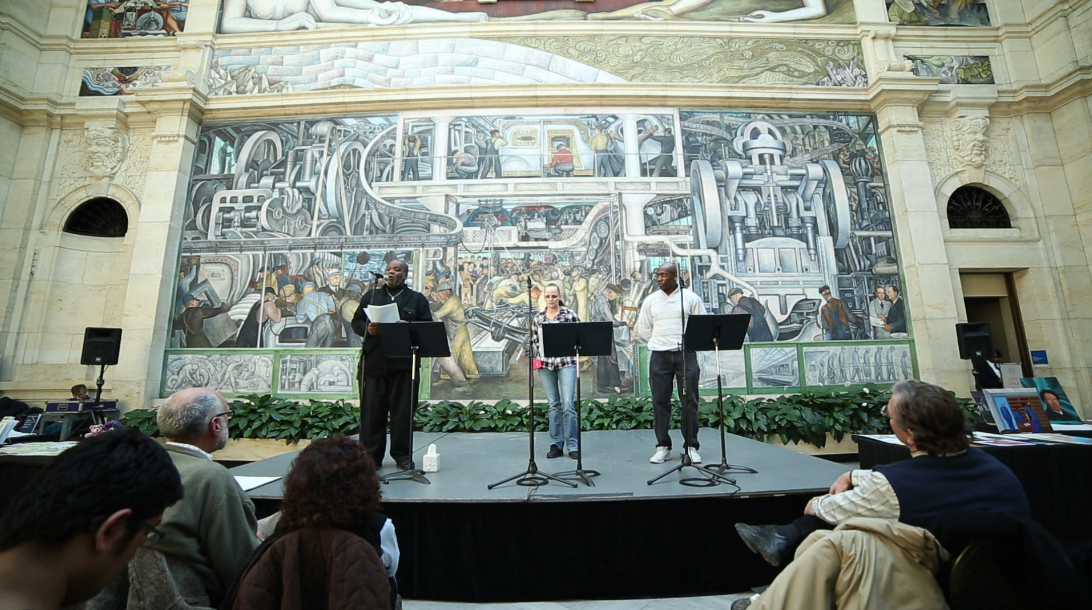Guest author: Sarah Fewkes

In late February, poetry traveled from the prison to the art museum. The Writer’s Block, a poetry workshop held at the Macomb Correctional Facility, hosted a poetry reading at the Detroit Institute of Arts. The Writer’s Block has a long history; most recently, the workshop partnered with the Hamtramck Free School, an arts organization that embraces free learning and interaction between peers. Every Wednesday night, members of the Free School travel to the Macomb Correctional Facility to read, write, and collaborate with the group of imprisoned poets, many of whom are “juvenile lifers”: people convicted to life sentences while minors. Still serving their terms, the poets could not attend the event. Family, friends, and allies volunteered to read in their stead.
The DIA’s high–ceilinged Rivera Court served as a setting for the event, Diego Rivera’s Detroit Industry murals staring down into the brightly–lit space. It’s a fitting location—one of Rivera’s largest concerns with his artwork was public accessibility. Presenters stepped onto the stage in groups of three, introducing themselves by giving their name and, in most cases, their relationship to the poet. Parents, siblings, cousins, and friends were present, reading poems from all manner of mediums—standard computer paper, pages torn from notebooks, leaflets in shades of pink and yellow that called to mind a Staples bargain bin. Some pieces were personally significant, referencing specific events and struggles, such as the death of a child, as in Yusuf Qualls–el’s poem “See” (read by his father, Reverend Qualls): “Do you see that I lost my son / Even with his hands up?” Others drew attention to the failures of society and the null effect of the prison system. Judy Orta read for her son: “Debts of all / Blood of one.” Mike Lala read James D. Fuson’s “Disindividuated,” a poem consisting almost entirely of the slew of numbers used to refer to incarcerated individuals, their locations, and their actions:
DISINDIVIDUATED
MCL 750.316
County No. 12356
3rd Circuit
MDOC No. 244473
Level 4 to Level 2
Housing Unit 3
Cell No. 98
Top Bunk
Counted
Assignment No. 602
5th for chow
036 now 436 Class II
Lockdown.
An iPad was laid out with a set of large headphones and a substantial iTunes library of the poets reading their own work. It sat on a table beneath Rivera’s fresco of raised fists, beside collections of books, paintings, handmade teddy bears, and a quilt. Amongst them were James D. Fuson’s 20 Years Reflection of an Empty Sky—a Collection of Haiku, alongside a page decorated with dried flower petals, David Armstrong Jones’s “Lipstick on a Monster” handwritten around them. Jones also painted many of the visual pieces on display, using vibrant colours and careful detail to depict scenes set both in and out of prison.
This is Writer’s Block, an anthology of the workshop’s poetry, is forthcoming from Soft Sculpture Press, and the DIA has agreed to host another showcase of their work. In the meantime, read more at the Hamtramck Free School’s Incarcerated Archive.

Detroit poetries: Field notes